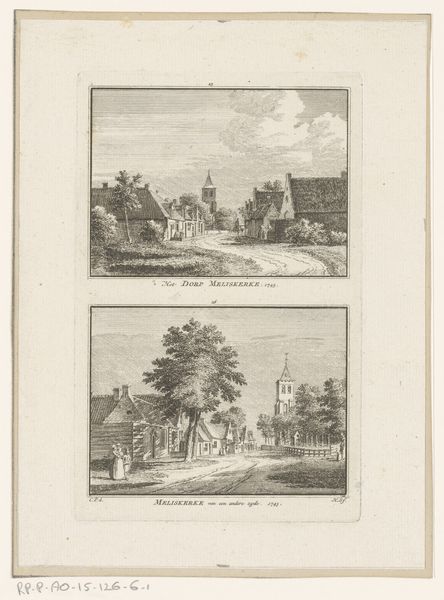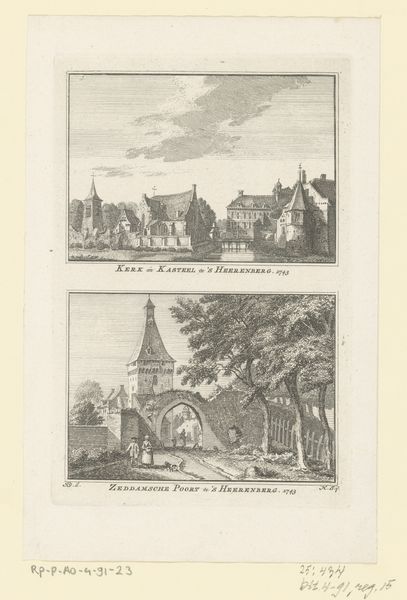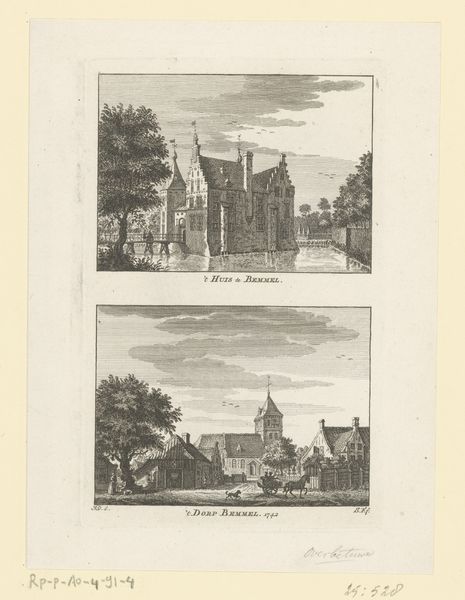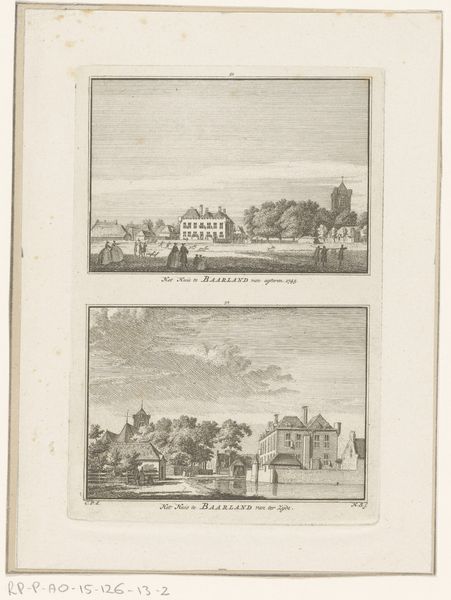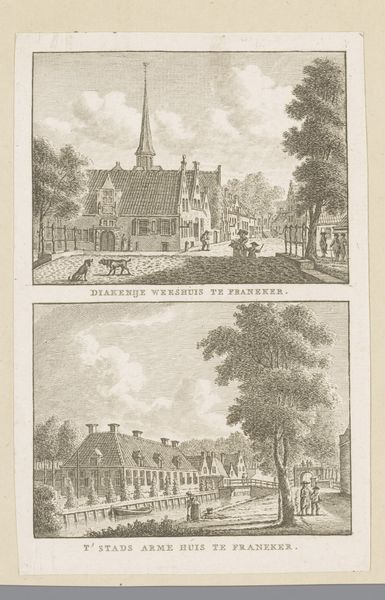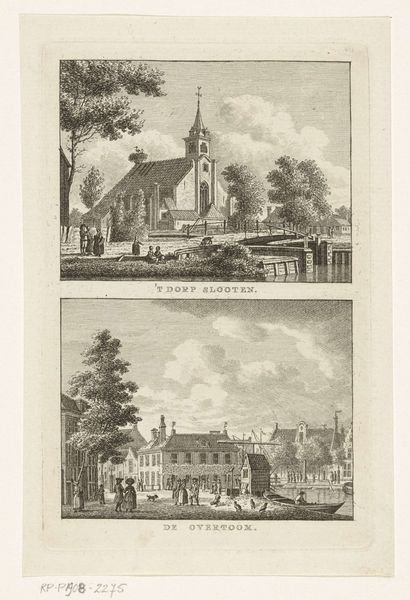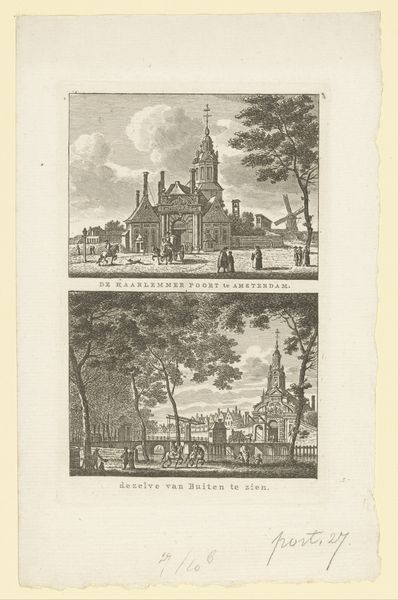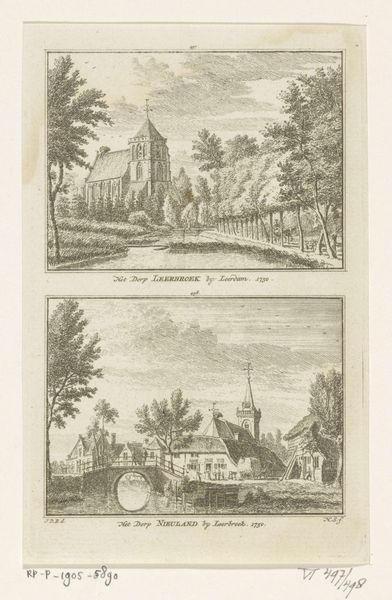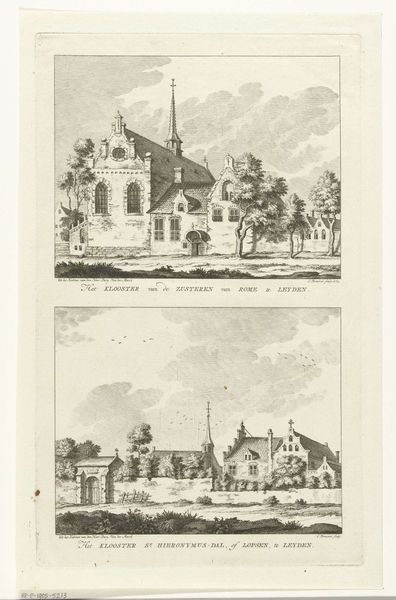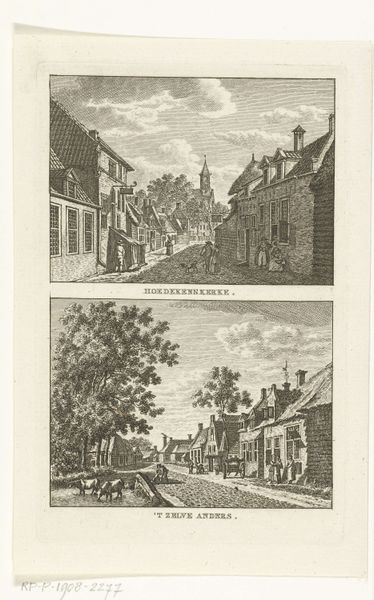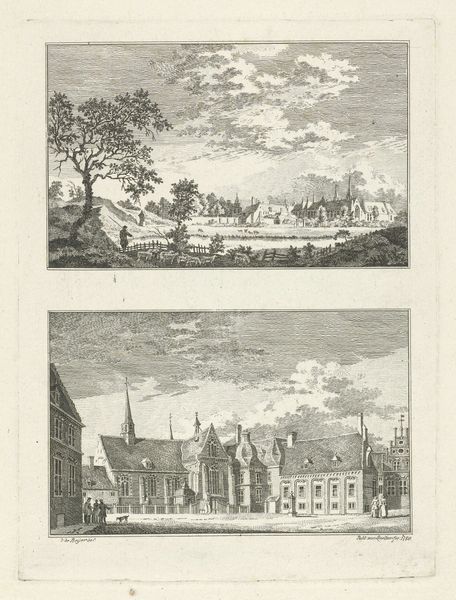
Gezicht op het Valkhof te Nijmegen en gezicht op St. Anna, buiten Nijmegen 1786 - 1792
0:00
0:00
print, engraving
#
neoclacissism
#
dutch-golden-age
# print
#
old engraving style
#
landscape
#
cityscape
#
genre-painting
#
engraving
Dimensions: height 169 mm, width 110 mm
Copyright: Rijks Museum: Open Domain
Curator: At first glance, I find a melancholic charm in this composition. It presents two landscape views with remarkable detail, each holding a subtle sense of yearning and loss in its atmosphere. Editor: That's interesting. To me, the striking aspect of Carel Frederik Bendorp’s 1786-1792 print is the material reality of 18th-century Dutch life depicted. The horse-drawn carriages, the figures walking—they point to class divisions inherent in the means of transport. Curator: I agree, the daily lives of people are depicted here. The composition divides neatly in half, contrasting perspectives from "Gezicht op het Valkhof te Nijmegen" above and "gezicht op St. Anna, buiten Nijmegen" below, and reflecting different spheres within the same society. How were such cityscapes shaping perceptions of identity and place during this era? Editor: More so, I am interested in the tools of creation! As an engraving, this work embodies reproduction and distribution—making these scenes accessible, or at least visible, to a broader audience than an original painting. That act in itself challenges art history's traditional valorization of "unique" objects. Curator: A valid point. Furthermore, the landscapes subtly assert Dutch identity within the narrative of the Dutch Golden Age landscape tradition—how were these spaces imbued with cultural meanings tied to power structures, gender dynamics, or class distinctions? These are not passive scenic views. Editor: Exactly. They present curated experiences accessible to certain demographics based on who is able to access certain vehicles of travel or ways to navigate streets. Who had the means to experience or consume this landscape, either in reality or through its depiction in print? Curator: Absolutely, this print acts as a conduit, reflecting the power dynamics inherent in experiencing such views. Considering its Neoclassical undertones, the rigid structures of both townscapes seem to emphasize order and societal roles that both shape the physical landscape and our lived experiences. Editor: It also reveals a story of labor and access to public spaces through this circulation and consumption of images. It reminds me that even apparently innocent depictions carry significant societal values of production. Curator: Your focus reminds us to examine the historical narratives in artworks like this one. By understanding these perspectives, it enhances our ability to challenge conventional stories within these landscapes. Editor: And by focusing on production and circulation, it really gives context to the social landscape during its time. It encourages to really see what materials were accessible to some and not others.
Comments
No comments
Be the first to comment and join the conversation on the ultimate creative platform.
